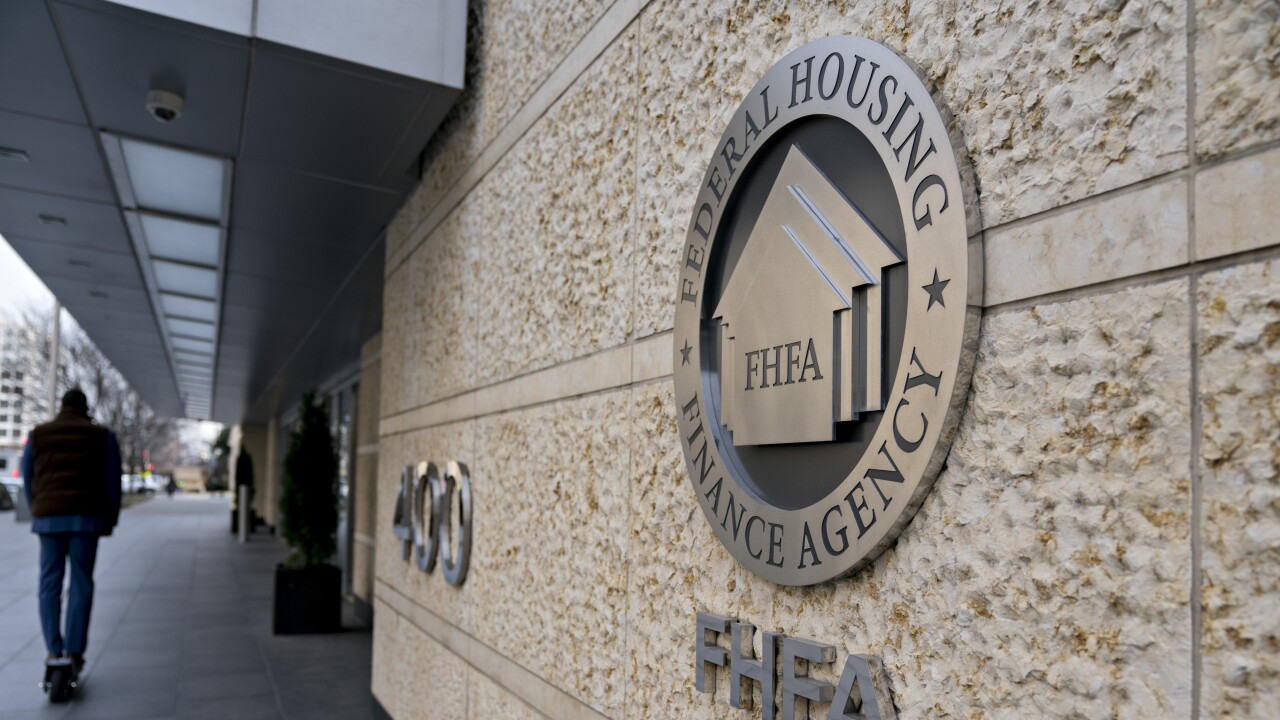New issuance of rated, first-lien residential-mortgage securitizations consisting of loans originated after the Great Recession slowed notably in 2022, but it is still likely to be the second-strongest year since that financial crisis, according to Kroll Bond Rating Agency.
KBRA estimates suggest the volume of residential mortgage-backed securities issued will approach $102 billion for the year, representing nearly a 17% drop from 2021. The primary driver of the trend was market volatility stemming from the six consecutive Federal Reserve rate hikes that occurred in 2022 — the fastest tightening seen since the early 1980s.
Unusual widening in risk-indicative spreads between rated RMBS and Treasury bonds slowed issuance in all subsectors during 2022 beyond what the ratings agency originally anticipated.
Investors demanded higher spreads "because there wasn't solidity in where rates might end up," said Eric Thompson, a senior managing director at KBRA, during the ratings agency's media briefing on its structured finance outlook.
Still, some sectors of the market are expected to end the year with relative gains.
For the first time since the Great Recession, nonprime securities will likely overtake prime ones, and private-label RMBS issuance may outpace commercial mortgage-backed securitization.
KBRA expects nonprime RMBS issuance to be up 50% year-over-year and total $45 billion. Also, credit-risk transfers from the government-sponsored enterprises are on track to be up 69% from 2021 at $24 billion. However, that is largely because Fannie had
But the gains in CRT and nonprime issuance this year have been outweighed by a drop in prime mortgage activity, which will likely end the year down 59%. Projections call for it to top out at $32 billion.
Market volatility diminished prime issuance in particular because it has a more dramatic effect on the relative attractiveness of private securitization relative to other outlets that these loans have, such as bank portfolios and sales to the GSEs or aggregators, reversing a previous trend.
"Spread volatility has really hurt issuance volume," said Jack Kahan, head of RMBS at the ratings agency.
The secondary market for nonprime mortgages, in contrast, is more reliant on securitization.
"Many nonprime originators just don't have another outlet for their loans," Kahan noted.
Also, the GSEs' switch from caps on investor loans to a pricing differential for them pushed fewer loans from that market into the private securitized sector in 2022 compared to 2021.
Still, the less attractive secondary market executions have been the primary drivers of RMBS declines in the past year. To date, between the fact that 2020 and 2021 were banner years for mortgage production and the lag between origination and securitization, loan volume declines have had less of an effect on RMBS issuance in 2022.
On the margins, some of the other mortgage-related securitizations in the separate second-lien market have seen some growth as they've become more relatively attractive origination prospects, with a growing number of nonbanks gravitating to the sector, Kahan noted.
However, the unusual nonbank moves seen in the past year toward a hybrid form of home equity lines of credit, which are more commonly held in pure HELOC form in portfolios by banks, haven't resulted in much securitization activity to date. A limited number of unrated deals have been done and only one deal was rated.
The ratings agency's research team anticipates a further drop in first-lien RMBS during 2023 to just above $60 billion, marking nearly a 40% decline from this year, but that's still above 2020's total of $55 billion.
The baseline assumption behind these projections is that monetary policymakers are on a path where they will signal a slowdown in rate hikes, resulting in more certainty around securities pricing by the second half of next year, in line with
Next year in the main RMBS market, the ratings agency anticipates that prime issuance will drop another 15% to $14 billion, while nonprime falls 30% to $30 billion, and CRT declines 25% to $18 billion.
One major challenge residential securitization will be facing in this coming year is cooling home prices. It's being counterbalanced, for the time being, by relatively strong loan performance that looks like a tailwind, the researchers said.
"Even if we have a mild recession, I think we're coming in from a position of strength," Thompson said.
What happens to RMBS in 2023 will continue to depend primarily on Fed actions, researchers said.
"Across structured finance, it comes down to…rates," Thompson said.





